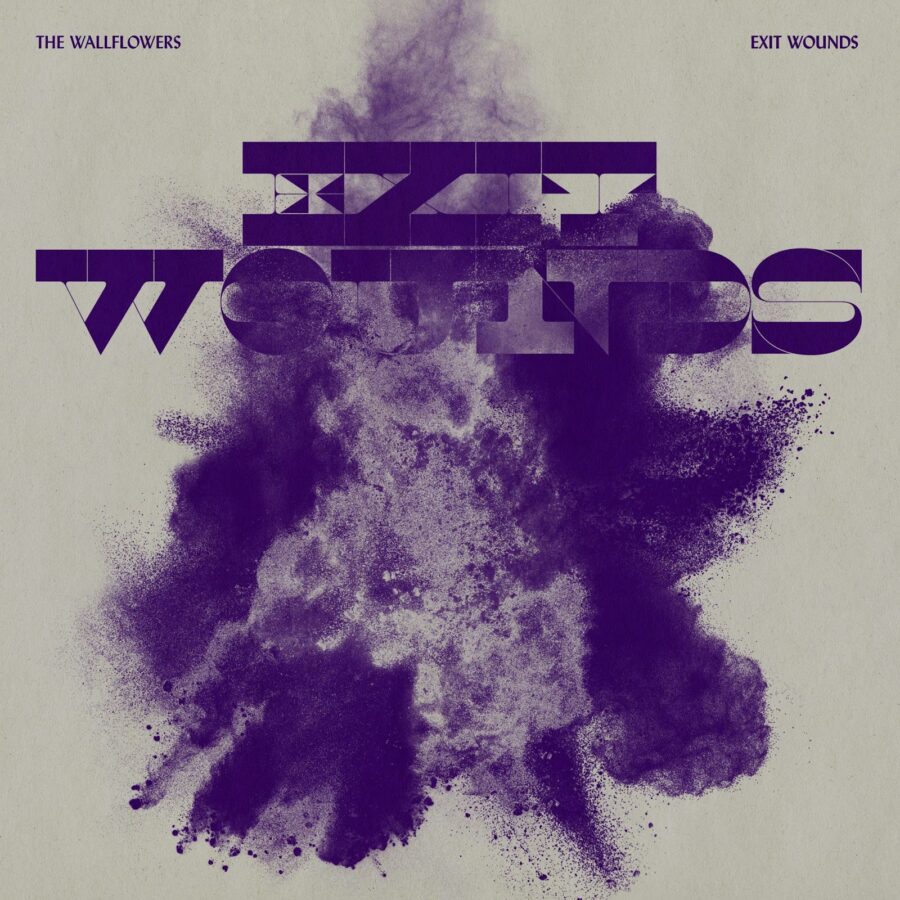After a nearly decade-long break, Jakob Dylan and The Wallflowers are back with Exit Wounds, an album that might be one of their best works to date. The record captures all the classic elements of The Wallflowers’ sound that first catapulted them to fame with “One Headlight,” but captures those classic sounds through the funnel of a fantastic, subtle musical evolution, bringing The Wallflowers to a peak point in their career.
Exit Wounds is full of blues and soul, built up and filled out with resounding organs and subtle guitars that crank out bluesy, Jazz-styled solos and fills. And between the carefully layered classic-rock flavored music that surrounds and envelops this album is continuous proof that Jakob Dylan is his father’s son—almost every track tells an exceptionally clever, poetic story, often made more beautiful by the weathered vocals of Jakob Dylan.
Between the style of the songs, the stories, and the vocals, Exit Wounds almost sounds like a cross between Bruce Springsteen and The Killers, with a fun, intriguing twist to it.
The album has a fair amount of motion to it on the whole; the first several tracks move slowly. They have a subtle, gentle beat to them and a very soft-rock vibe that permeates their sound. The halfway point of the record picks up in intensity and speed, and then quickly slows down again, to pick up one more time with the penultimate track. It’s a healthy amount of motion—just enough that each song feels different, sonically, but not so much that it feels like the album lacks cohesion. It’s a perfect collection, perfectly ordered and with such interesting elements to it.
This is, without a doubt, a classic rock album incepted in 2021, a sentence that is just lovely to write.
The track “Darlin’ Hold On,” tells a fantastic story, and incorporates into that story such beautiful wisdom—a talent that a very minute collection of songwriters possess.
“You were already wise to a world that’s bitter as it’s sweet/With both kinds of magic, and God never gets his sleep/Now Darlin’ hold on/I’m far but I’m not gone.”
There is an integrity in the straightforward, almost simple nature of the truth that Dylan expresses here. And within the wisdom, the soft, mournful crooning of the guitar, and the subtle piano, is a story that lacks enough clarity that it can be easily and automatically personalized to the listener. I am sure that Dylan had someone particular in mind when he wrote this, but anyone who listens to this song will think of someone else, someone important to them, someone to whom this applies. And that element, that ability to build a song that allows for self-interpretation is another talent possessed by a very small sect of songwriters.
Advertisement
“Wrong End Of The Spear” begins with an immensely satisfying, incredibly soulful chord progression on a guitar that has been treated with a wonderful pedal. This song paints a very vivid story, a painful story that is undercut by the easy, soft nature of the music.
“First sign of trouble you take to the woods/With your slippers and your hair pulled under your hood/You won’t look behind you, you’ll just know that you should.”
“Who’s That Man Walking ‘Round My Garden,” likewise tells a vivid story, though this one has a much grittier, more rock ‘n’ roll groove to it; it swings and bounces and is full of twists and turns and violent surprises.
It is exceptionally rare today to find music that consists of layers of soulful music—guitars and bass, pianos and organs, all running blues-styled riffs—buoying exceptional stories. This album is full of stories. Every track is a new world with new characters and different pain, and it is expressed beautifully by that particular kind of breathy rasp that Dylan is so well-known for.
Advertisement
The music screams of soul and the lyrics tell of a journey.
It’s slower and more mature than Bringing Down The Horse. It is the proper evolution for The Wallflowers; true to their sound, but sharper, more poignant.
Exit Wounds is a real work of art. A perfect example that there is beauty to be found within pain.
Advertisement
Advertisement
